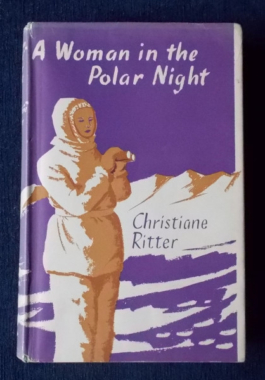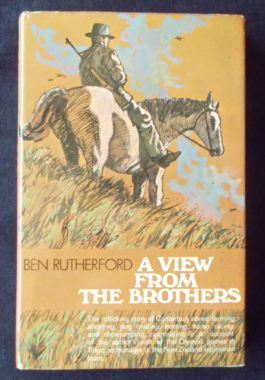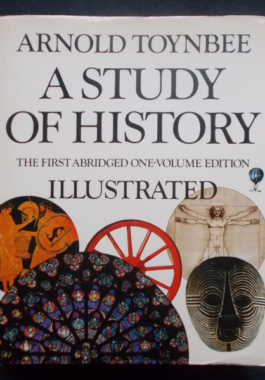-
 Ten noted anthropologists examine the evolution of Aboriginal power from pre-white contact to the 1980s. The first five chapters deal with power relations and ideologies in traditional and tradition-oriented Aboriginal societies and power in relation to myth, land rights, leadership and socialisation. The remaining chapters focus on Aborigines and Torres Strait Islanders are are more integrated into Australian society, mainly urban dwellers; the political middlemen, internal colonialism, the formation of a pan-Aborignal identity and the question of Aboriginal power in an urban setting in general. As a whole, the book offers a wide-ranging examination of the power possessed by Aborigines and how Aborigines perceive power among themselves and in relation to others. The contributors are: Michael. C. Howard; E. Kolig; D.H. Turner; K. Maddock; F.R. Myers; R. Tonkinson; J. Beckett; J.C. Pierson; and D.J. Jones; J. Hill-Burnett.
Ten noted anthropologists examine the evolution of Aboriginal power from pre-white contact to the 1980s. The first five chapters deal with power relations and ideologies in traditional and tradition-oriented Aboriginal societies and power in relation to myth, land rights, leadership and socialisation. The remaining chapters focus on Aborigines and Torres Strait Islanders are are more integrated into Australian society, mainly urban dwellers; the political middlemen, internal colonialism, the formation of a pan-Aborignal identity and the question of Aboriginal power in an urban setting in general. As a whole, the book offers a wide-ranging examination of the power possessed by Aborigines and how Aborigines perceive power among themselves and in relation to others. The contributors are: Michael. C. Howard; E. Kolig; D.H. Turner; K. Maddock; F.R. Myers; R. Tonkinson; J. Beckett; J.C. Pierson; and D.J. Jones; J. Hill-Burnett. -
 On April 6, 1924, eight courageous young Army airmen too off on a 26,000 mile journey into the record books. Three years before Lindbergh flew from New York to Paris, they set out from Seattle in four open-cockpit bi-planes, determined to circle the globe - and they did it. They were battered by blizzards and typhoons, lost in sandstorms and blinding fog and had even given up two of their number for dead. Here is the epic story of the first around-the-world flight.
On April 6, 1924, eight courageous young Army airmen too off on a 26,000 mile journey into the record books. Three years before Lindbergh flew from New York to Paris, they set out from Seattle in four open-cockpit bi-planes, determined to circle the globe - and they did it. They were battered by blizzards and typhoons, lost in sandstorms and blinding fog and had even given up two of their number for dead. Here is the epic story of the first around-the-world flight. -

Mrs. Ritter left a very comfortable home to keep house for her husband and a Norwegian trapper in a hut that measured 12ft x 6 ft on Spitzbergebn, some 60 miles from the only neighbour. She was there for a year, often alone for long periods of time while the men were about their affairs - she was alone during her first Arctic blizzard; at other times she went with them on their journeys across snow and ice. Although she came to the experience reluctantly, she fell in love with the lonely island wilderness and all its marvels - from its dark and violent winter to the rose and violet hues of the Arctic summer. Here are stories of bear hunts, blizzards, hazard trekking, making friends with a white polar fox which she named Mikkl as well as the domestic scenes of life within four narrow walls. At this time, the Arctic was regarded as for men only - but Christiane proved this to be all wrong.
-
 Ben Rutherford was brought up on a high country sheep station in New Zealand, and brought up the old fashioned way. Here he shares his stories of high country farming, swaggers, station cooks and their eccentric temperament, dog trials, horse racing, pig and deer shooting and other rumbustious elements of the New Zealand way of life...a way of life so rumbustious that a farmer member of the Christchurch Club was once heard to exclaim: "It's not the rabbits I'm worrying about, it's the Rutherfords!"
Ben Rutherford was brought up on a high country sheep station in New Zealand, and brought up the old fashioned way. Here he shares his stories of high country farming, swaggers, station cooks and their eccentric temperament, dog trials, horse racing, pig and deer shooting and other rumbustious elements of the New Zealand way of life...a way of life so rumbustious that a farmer member of the Christchurch Club was once heard to exclaim: "It's not the rabbits I'm worrying about, it's the Rutherfords!" -
 Shot down in 1942, young Australian fighter pilot John Williams DFC became a POW in the notorious Stalag Luft III camp in Germany. John had joined the air force shortly before the outbreak of war and, in the larrikin tradition, led his squadron into air combat over the deserts of Libya and Egypt dressed in sandals and shorts. John and his best mate Rusty Kierath were among the 76 POWs who tunnelled their way out of the supposedly escape-proof camp under the noses of their German guards in what later became the Hollywood blockbuster, The Great Escape. Their families never learned what really happened once the pair made it out into the forest. John's niece Louise Williams has pieced together his life, from his upbringing in a tight-knit family hit hard by the Depression, to his exploits in the air, and the many missing details of the tragic escape. It is a powerful and intimate story of one of the most dramatic episodes of World War II. Illustrated with black and white photographs.
Shot down in 1942, young Australian fighter pilot John Williams DFC became a POW in the notorious Stalag Luft III camp in Germany. John had joined the air force shortly before the outbreak of war and, in the larrikin tradition, led his squadron into air combat over the deserts of Libya and Egypt dressed in sandals and shorts. John and his best mate Rusty Kierath were among the 76 POWs who tunnelled their way out of the supposedly escape-proof camp under the noses of their German guards in what later became the Hollywood blockbuster, The Great Escape. Their families never learned what really happened once the pair made it out into the forest. John's niece Louise Williams has pieced together his life, from his upbringing in a tight-knit family hit hard by the Depression, to his exploits in the air, and the many missing details of the tragic escape. It is a powerful and intimate story of one of the most dramatic episodes of World War II. Illustrated with black and white photographs. -
 Like a tramp, a pilgrim or a wandering scholar, an 18 year-old boy set out one wet December day in 1933 to walk to Constantinople. In that year, when Hitler came to power, adventure beckoned and youth was golden for Patrick Leigh Fermor as he tramped up the Rhine and down the Danube towards the mysterious gateway to the East - sleeping barns, or in fairy tale castles, losing his possessions and being showered with gifts. But there was more to discover than freedom and the camaraderie of the road: the arts, landscapes, religions, languages, histories and above all, the people of a dozen civilisations unfolded before his hungry young mind - sharply outlined before the gathering storm. This volume covers his journey from the Hook of Holland to the Middle Danube.
Like a tramp, a pilgrim or a wandering scholar, an 18 year-old boy set out one wet December day in 1933 to walk to Constantinople. In that year, when Hitler came to power, adventure beckoned and youth was golden for Patrick Leigh Fermor as he tramped up the Rhine and down the Danube towards the mysterious gateway to the East - sleeping barns, or in fairy tale castles, losing his possessions and being showered with gifts. But there was more to discover than freedom and the camaraderie of the road: the arts, landscapes, religions, languages, histories and above all, the people of a dozen civilisations unfolded before his hungry young mind - sharply outlined before the gathering storm. This volume covers his journey from the Hook of Holland to the Middle Danube. -
 Dickens' Mr Micawber solved his problems by emigrating to Australia; his example was followed by Dickens' own sons. Alfred arrived in 1865 and younger brother Edward three years later. They both became managers and part-owners of stations in the far west of New South Wales, and stock and station agents. Alfred moved to Victoria and lectured both in Australia and overseas. Edward went to live in Wilcannia which he represented in Parliament. They may not have won fame or fortune, but their story, partly told through family letters, is still absorbing and would be of interest to any fan of Dickens.
Dickens' Mr Micawber solved his problems by emigrating to Australia; his example was followed by Dickens' own sons. Alfred arrived in 1865 and younger brother Edward three years later. They both became managers and part-owners of stations in the far west of New South Wales, and stock and station agents. Alfred moved to Victoria and lectured both in Australia and overseas. Edward went to live in Wilcannia which he represented in Parliament. They may not have won fame or fortune, but their story, partly told through family letters, is still absorbing and would be of interest to any fan of Dickens. -
 Originally published in twelve volumes, this edition revised by the author and Jane Caplan is the essence of that original work. It is also a redrafted, revised and updated version. Chapters: The Shape Of History; The Geneses Of Civilisations; The Growth Of Civilisations; The Breakdown Of Civilisations; The Disintegrations Of Civilsations; Universal States; Universal Churches; Heroic Ages; Contacts Between Civilisations In Space; Contacts Between Civilisations In Time; Why Study History? With over 500 illustrations.
Originally published in twelve volumes, this edition revised by the author and Jane Caplan is the essence of that original work. It is also a redrafted, revised and updated version. Chapters: The Shape Of History; The Geneses Of Civilisations; The Growth Of Civilisations; The Breakdown Of Civilisations; The Disintegrations Of Civilsations; Universal States; Universal Churches; Heroic Ages; Contacts Between Civilisations In Space; Contacts Between Civilisations In Time; Why Study History? With over 500 illustrations.



